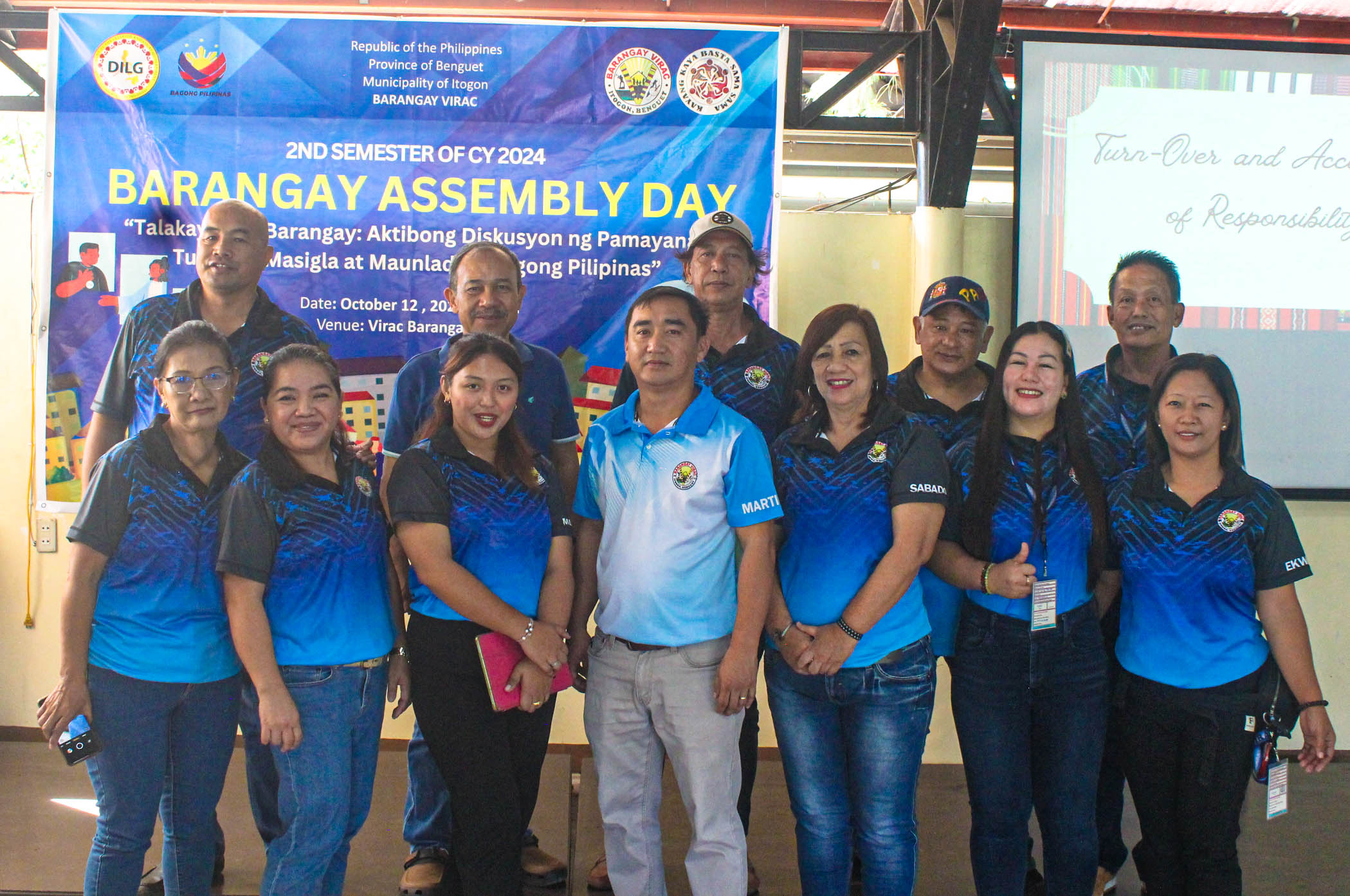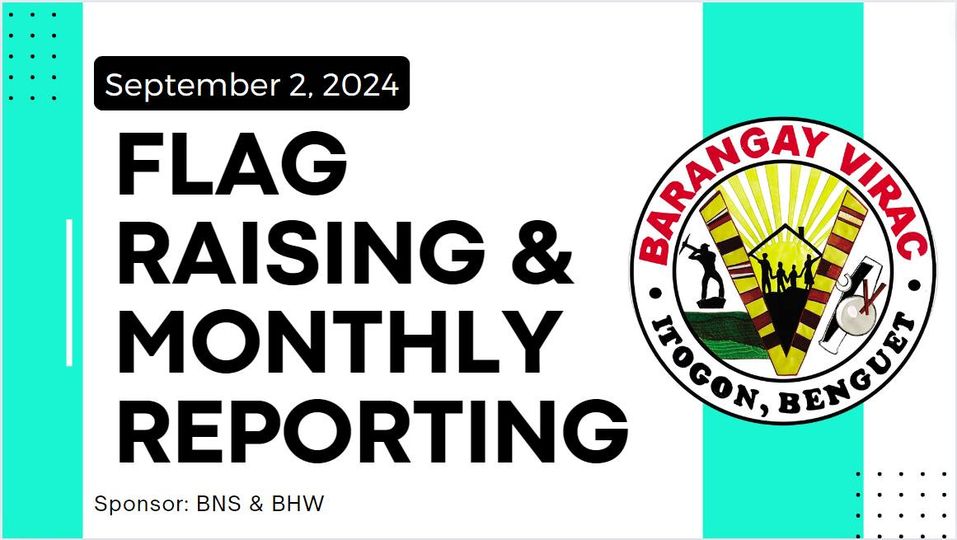
HISTORY OF BARANGAY VIRAC PRE – SPANISH PERIOD Prior to the Spanish colonization during the first half of the sixteenth century, life in the area was naïve and peaceful. The Ibalois, who were the first inhabitants of the place, had sufficient economy rooted on agricultural and small – scale mining characterized by gold panning. The people then relied on these for livelihood until mining became their most significant activity. Socially, there was no distinct class or superior group among them. For judicial matters, the people consulted class or superior group who was considered for such tasks by virtue of his reputation wisdom, experience or knowledge of customary laws. SPANISH PERIOD Six months after the bloody conquest of Manila in 1571, the first Spanish Governor of the Philippines, Miguel de Legazpi, sent his worthy grandson. Captain Juan de Salcedo for an expedition to the West Coast of Northern Luzon. Having learned about the treasures of the area. However, the natives bravely resisted the Spanish colonization and subjugation but the superior and greedy Spaniards victoriously penetrated the region. The Spanish plunderers left only indelible marks on the communal; consciousness of the inhabitants. Nevertheless, it had not caused the absolute alienation of the people and their future. The Spanish colonization of the region was not after all a nightmare in its entirety, for it paved the way to the naming of the area, VIRAC. Originally, this place was a farmland surrounded by stagnant water called “LUBNAK” which the Spaniards usually took as a short cut route going down to Spanish town on the Eastern side of Baguio City which eventually the Municipality of Itogon. One afternoon, horse ridden Spanish officials who trod the area would often times hear strange sounds: thus, one official, to contain his curiosity prompted to query what produced those odd sounds, and the native replied. “They are from the GURAKS” which the Ibaloi called, “FROG”. The official probably misunderstood the term to be “BERAK”. From then on, the place had been called “BERAK” and later modified into VIRAC, which is popularly known to the present. Even after having been under the Spanish regime, life went on as before. As had been in the past, a certain bond of unity and cooperation continued to govern the inhabitants. AMERICAN PERIOD Early Spanish accounts of the rich mineral of the Cordilleras motivated the American to launch series of expeditions composed mostly of engineers, mining prospectors and surveyors to the area. American interests in the Cordillera were carried out through three important strategies. The first strategy was the creation of the Bureau of Ethnological Survey in the Philippines (BESP) in 1903 initiated by Dr. Metron Miller. The second strategy was the construction of roads and trails for the termination of head-hunting intertribal warfare, and the development of the local mining industry. The third strategy, the easiest one but most effective, was the intermarriages among American mining prospectors and the members of the rich Ibaloi clans who own the mining sites of Itogon. BARANGAY VIRAC THEREAFTER There were lots of changes then, adjustment was made, because the natives were to deal with different kinds of people of diversified culture unlike when they were all by one unique culture. Originally, the area was dominated by the Ibalois. But later on, several people from the northern provinces of the cordillera migrated to the place due to the rise of an epidemic cholera. Then in 1903, when the mining industry boomed, people coming from the lowlands and all other points of the Philippines flocked to this area and settled either in bunkhouses or in shacks. Prior to the migration period, the people in Virac were so complacent and organized. They lived in solidarity and accomplished things easily through “bayanihan”, and social conflicts were minimal. People gave due respects to the assumption of the lead roles. Politics in the area was given little importance and recognition. There were no elections held then, since the elders were heads or rulers of the community. During the Spanish and American regimes, the Teniente de Baryo (Barangay Captain) was appointed by the said colonizers. It was only in 1966 when the first election was held in the area when Mr. EDUARDO BUSOY, a former Ibaloi clan head, was elected as the first Barangay Captain. The electoral process was unique, as there was unanimity of support for one candidate among the Ibaloi’s choice. From then on, election became a contest among ethnic group leaders not by individual persons who are opting for a political position. Recently, a more colorful and democratic electoral process broke out the medieval concept of electing barangay Head in the community as the lowlanders posed a challenge to the ethnic groups. Despite the diversities of social, political, economic and cultural orientations among were explicitly manifested by the people of Barangay Virac since then. Today the people of Virac are very proud to have officials and personnel who are service-oriented, cooperative, hardworking, deserving efficient and dedicated public servants and above all God-fearing. – Source: The Late Eduardo Busoy, first Barangay Captain (1962 – 1982)





Only barangay residents are permitted to send messages through this site.
News
1ST BARANGAY SA SITIO 08/07/2024News
2ND BARANGAY SA SITIO 08/07/2024News
3RD BARANGAY SA SITIO 08/07/2024
News
4TH BARANGAY SA SITIO 08/07/2024
News
NEW COMMUNITY COVERED GYM IN JUNGLETOWN, VIRAC 08/07/2024
News
HISTORY OF BARANGAY VIRAC 08/07/2024
News
EMERGENCY HOTLINES 08/07/2024
News
MAY 2024 BARANGAY VIRAC ROAD CLEARING 08/07/2024.png)
News
.......... 09/10/2024
News
Updated Itogon emergency hotlines 09/11/2024
News
Job Fair 09/14/2024
News
Annoucement 09/14/2024
News
Flag Raising Ceremony 09/14/2024
News
THE COUNCIL 11/08/2024